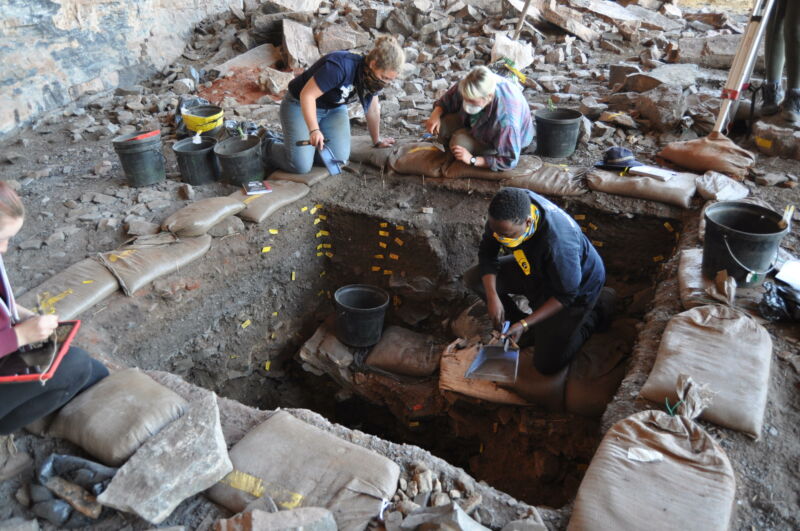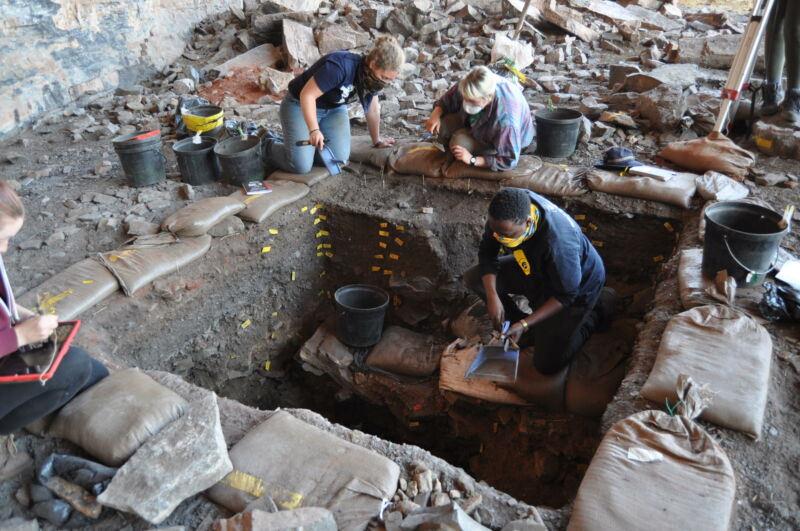
Between 125,000 and 70,000 years ago, people began to do some very modern things: collecting small objects for no practical reason, decorating things with pigments, and storing water and possibly even food in containers. The oldest known sites with evidence of those behaviors are along the coastline of southern Africa. Today, most of those important sites are right on the coast, but even during the Pleistocene, when sea levels were lower, they would have been close enough for the people who lived there to make use of marine resources.
And according to one idea in paleoanthropology, something about that way of life enabled those early people—or maybe pushed them—to innovate. Their distant neighbors who lived far from the sea supposedly lagged behind the cultural times. But Griffith University archaeologist Jayne Wilkins and her colleagues recently unearthed evidence that landlocked people were just as hip and modern as their counterparts on the coast.
Score one for flyover country
At Ga-Mohana Hill North Rockshelter, there’s a layer of sediment dating back to 105,000 years ago and scattered with stone tools. In it, Wilkins and her colleagues found a large chunk of red ocher, worn flat and striated on two sides, as if it had been used as pigment. The rock shelter also held a cache of translucent white calcite crystals, which hadn’t been worked or used as tools; it looked as if someone had gathered up the crystals simply for the sake of having them, or maybe as a ritual offering. Several broken, burned pieces of ostrich eggshell, buried in the same layer, may once have held stores of water.




